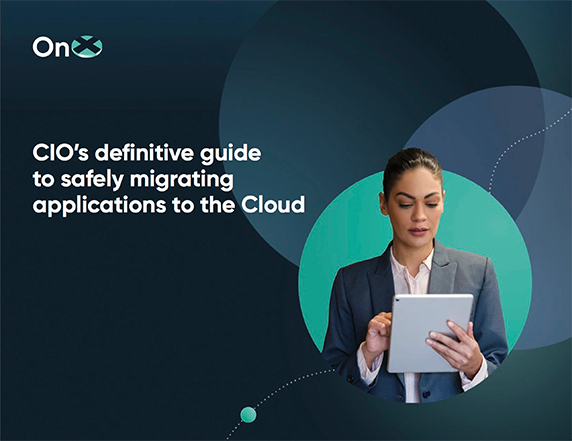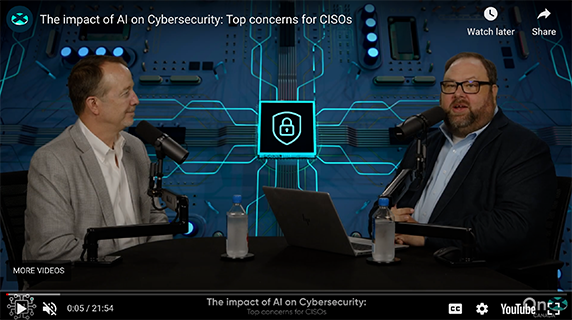
Traditionally, it has been common security practice for a company to deploy a single firewall for each branch. Legacy networks were much less complicated, with most businesses having a single edge (where devices meet the Internet). However, the shift to remote work and mobile devices has exponentially complicated edge networking for most companies. The points of presence (PoPs) have multiplied so much that a single firewall is not sufficient. Each edge device must be secured, and all company data must be defended, whether in the Cloud, on-premises, at home, or bouncing across the cloud network.
To keep up with emerging security threats and vulnerabilities, the modern enterprise must implement both proactive and reactive cybersecurity protocols. Simply having a firewall at the edge and running a virus scan on your desktops is no longer enough. A business must utilize all the tools at its disposal to keep user and company data safe. Embedding cloud network security into business operations is a crucial way of simplifying security. To do so, a company must secure every connected business device, monitor every application, and consider each employee as a human firewall that helps protect the business.
This post will outline three tactics that greatly enhance network security across the Cloud: devices, applications, and personnel
Device security
The hybrid revolution means that it is no longer good enough for an employee to work from anywhere. They must also be secure when working remotely and from their chosen device. This convenience for remote workers leads to greater productivity but strains security teams. Every device that connects to a company’s network is a potential backdoor for a cyberattack.
The good news is that cloud network security is evolving. There are new tools and protocols to secure edge devices, including:
- SSE/SASE. Edge security is a framework that weaves together existing security tools such as SD-WAN with next generation tools like zero trust networking, and Firewall as a Service (FWaaS).
- EDR. Endpoint detection response is a managed protection solution of next-gen anti-malware with 24×7 monitoring and response from a managed security services provider. EDR utilizes constant monitoring to detect shifts in user behavior and track emerging vulnerabilities.
- MDM. Mobile device management gives companies greater visibility and control over network-connected devices. A company must enroll in an MDM service and set up device rules. Using MDM, companies can create a policy to enforce security controls on connected devices. For example, you might use MDM to turn off the camera and microphone for all devices during a sensitive meeting.
Also read: The role of security in digital transformation
Application security
A company is more than the sum of its applications—it is the value of the people, processes, data, and applications. Companies may use Software-as-a-Service (SaaS) vendors for payroll, HR, finance, communications, and more. Just as every device is a potential security risk, each application a company uses in its operations can be a risk if not secured correctly. Physical, software, and application supply chains are more connected than ever before. This inter-connected web of applications means a vulnerability at one link in the supply chain can cause a data breach with a vendor or partner if you are not securing your cloud applications.
Fortunately, businesses can take some preventative steps to secure applications:
- Patches. Installing the latest security patches for operating systems and applications should be a regular process for companies. Routinely patching vulnerabilities protects against all kinds of threats, so it’s important to schedule patch updates at least once a month.
- Vulnerability scans. Vulnerability scans scan an organization’s network for software that has not been patched. Then, these weaknesses are identified and documented in a report with recommendations and suggested next steps. Vulnerability scans should be scheduled monthly.
- Penetration tests. Not to be confused with vulnerability scans, a penetration test (or pen test) is a test conducted by security consultants to see if a vulnerability can be exploited. The idea is to mimic a cyberattack comprehensively. Penetration tests are more of an investment, with costs starting at $15,000 and running upwards of $70,000 for large, complex networks. Pen tests can run from several days to multiple weeks.
- Cybersecurity assessments. Many companies struggle when deciding which security measures to prioritize. Security assessments are a great starting point. Leaning on the expertise of a security consulting firm like OnX helps you prioritize the many steps in securing your company’s network. In addition, a security assessment may be necessary to keep your business compliant with relevant regulatory bodies such as HIPAA.
Learn more: Tips for building a comprehensive cloud security program
Personnel security
Remote access is nearly a requirement for companies seeking to hire the best and brightest employees—however, the hybrid environment increases an organization’s risk. Most successful cybercriminals start by attacking your employees. Data leaks can occur from phishing attacks rather than brute-force hacking attempts. To address the threat, businesses must cultivate a security-first culture.
In other words, you want to make every worker on staff a human firewall for the company. But how does that work in practice?
How to adopt an “employee-as-a-firewall” approach:
- Mandate security training. Build cybersecurity training into the onboarding process and regularly update training materials. Host regular company-wide security training meetings to keep your business ahead of emerging cyber threats.
- Assess and adjust permissions. Keep a close watch on who can access sensitive systems and data and review to make sure they still need access.
- Implement zero trust network access (ZTNA). ZTNA processes, procedures, and protocols add an extra barrier by requiring internal and external proof of identification for all users, devices, and applications, before accessing sensitive data.
- Deploy identity access management (IAM). IAM helps control and manage user identities and access permission on your network and in cloud ecosystems like AWS.
- Multi-factor authentication (MFA). MFA acts as a deterrent to phishing e-mails and compromised credentials. Some companies hesitate to implement MFA because they think it will slow down the login process or be time-consuming to set up initially. But the security benefits far outweigh any perceived downsides. Additionally, MFA is commonly required for many data compliance rules.
Selecting a cloud network security partner
Choosing the appropriate tools for your company’s operational needs and budget can be challenging. How can you select the best-in-breed security tools and stay current with emerging threats? And how can your IT department deploy new security protocols without distracting from mission-critical projects?
The security team at OnX uses a phased process to discover your organization’s unique operational needs. Then, our experts pinpoint potential vulnerabilities and make recommendations based on those findings. To maximize your organization’s potential for innovation and efficiency, OnX can offload the IT burden with our ongoing managed security services.
Get in touch to schedule your security assessment today.
















